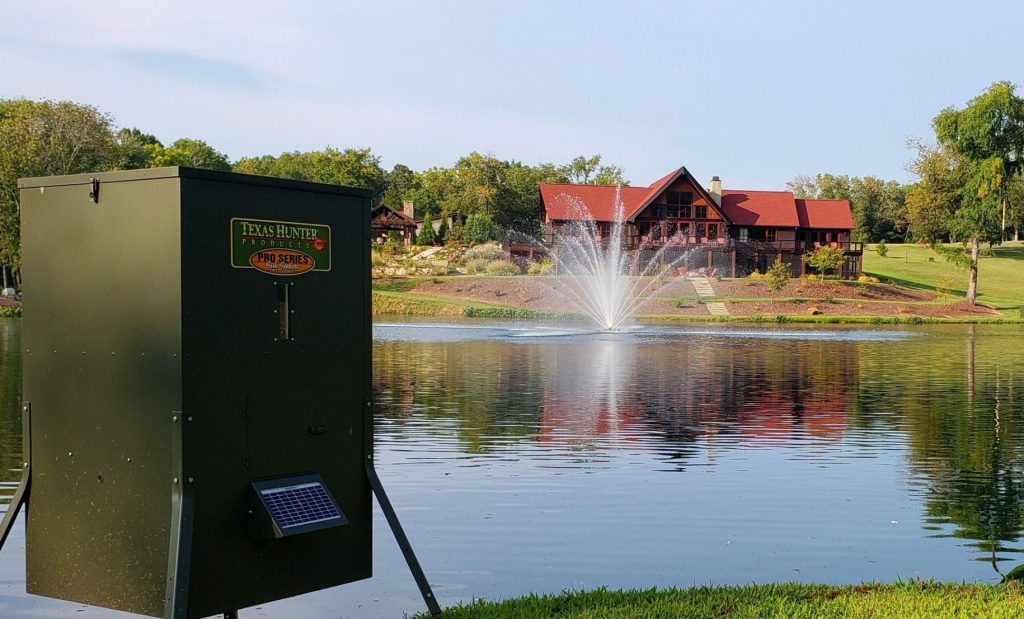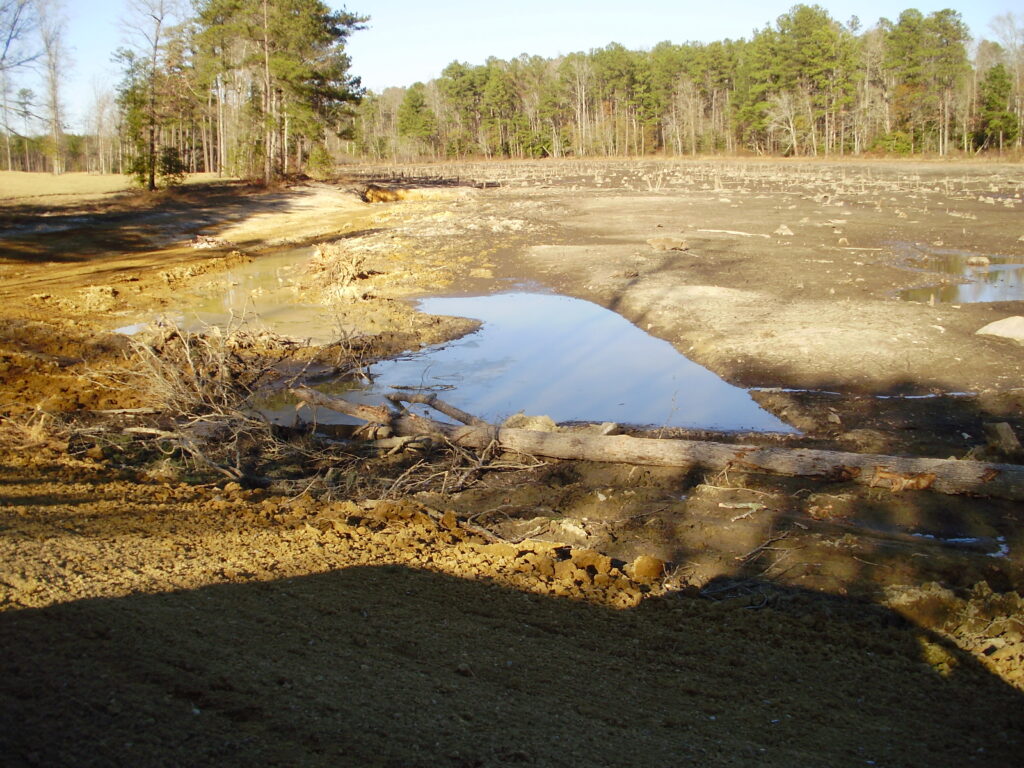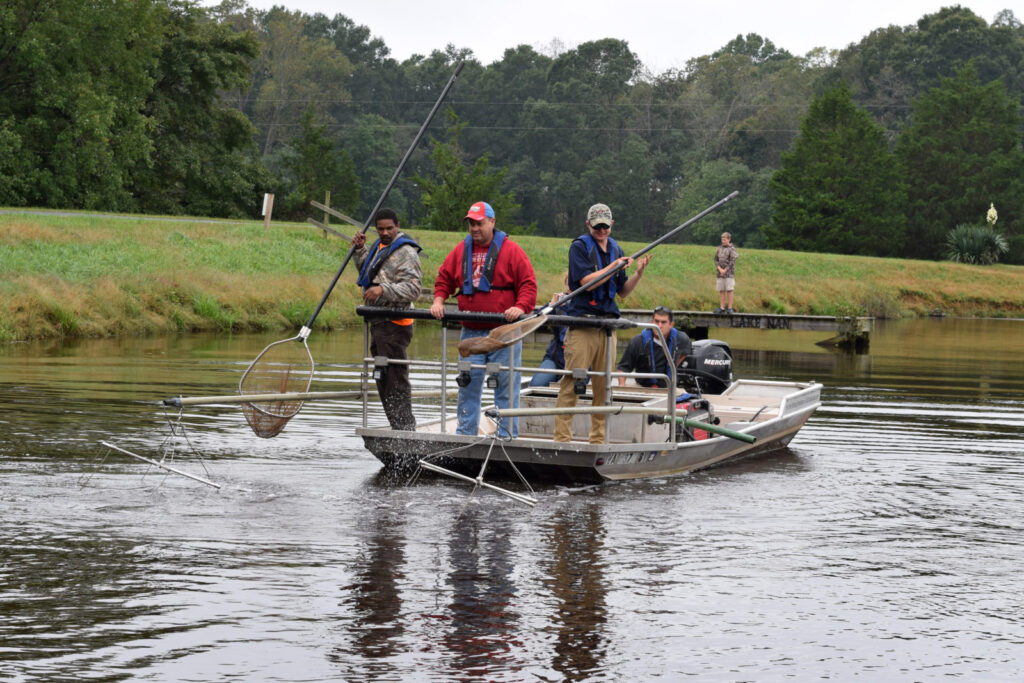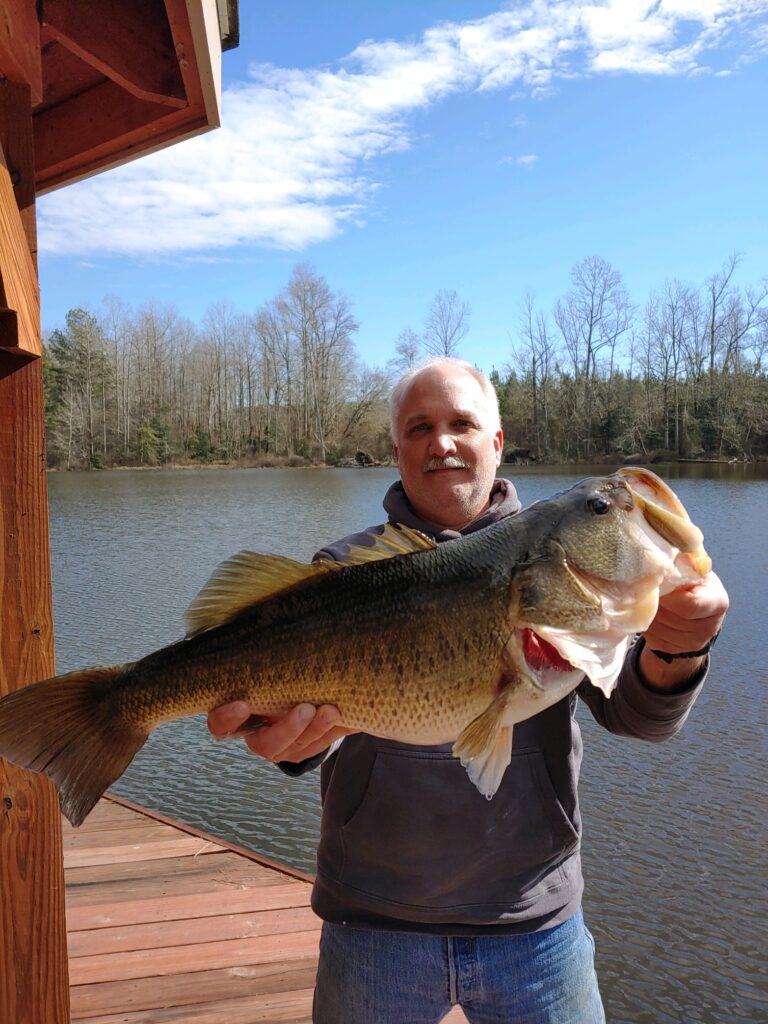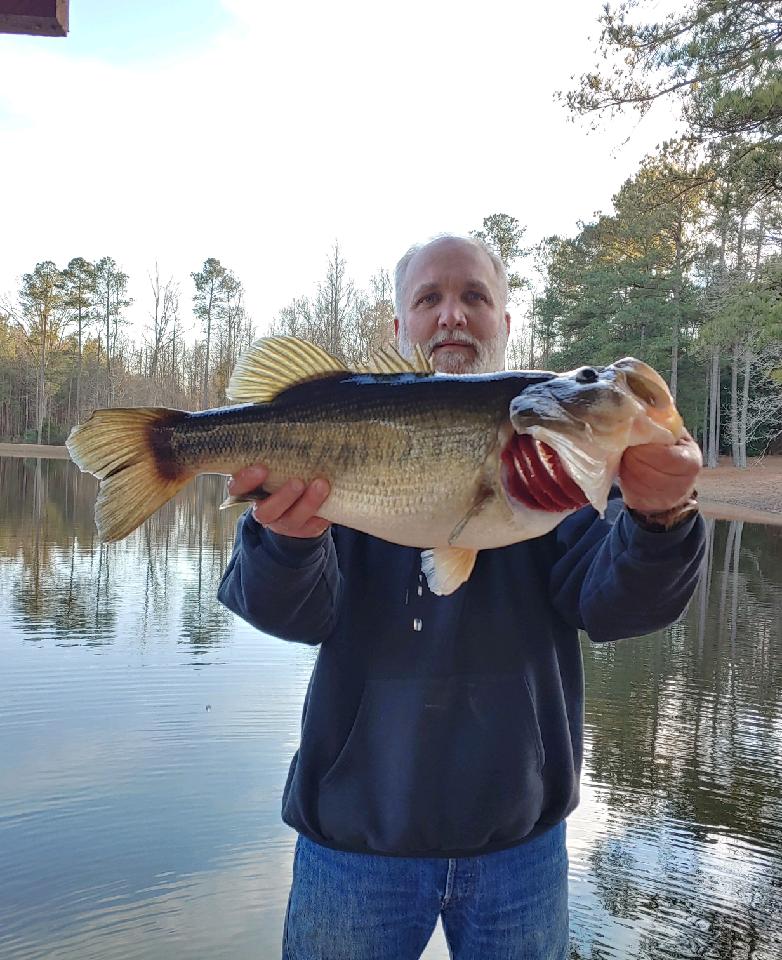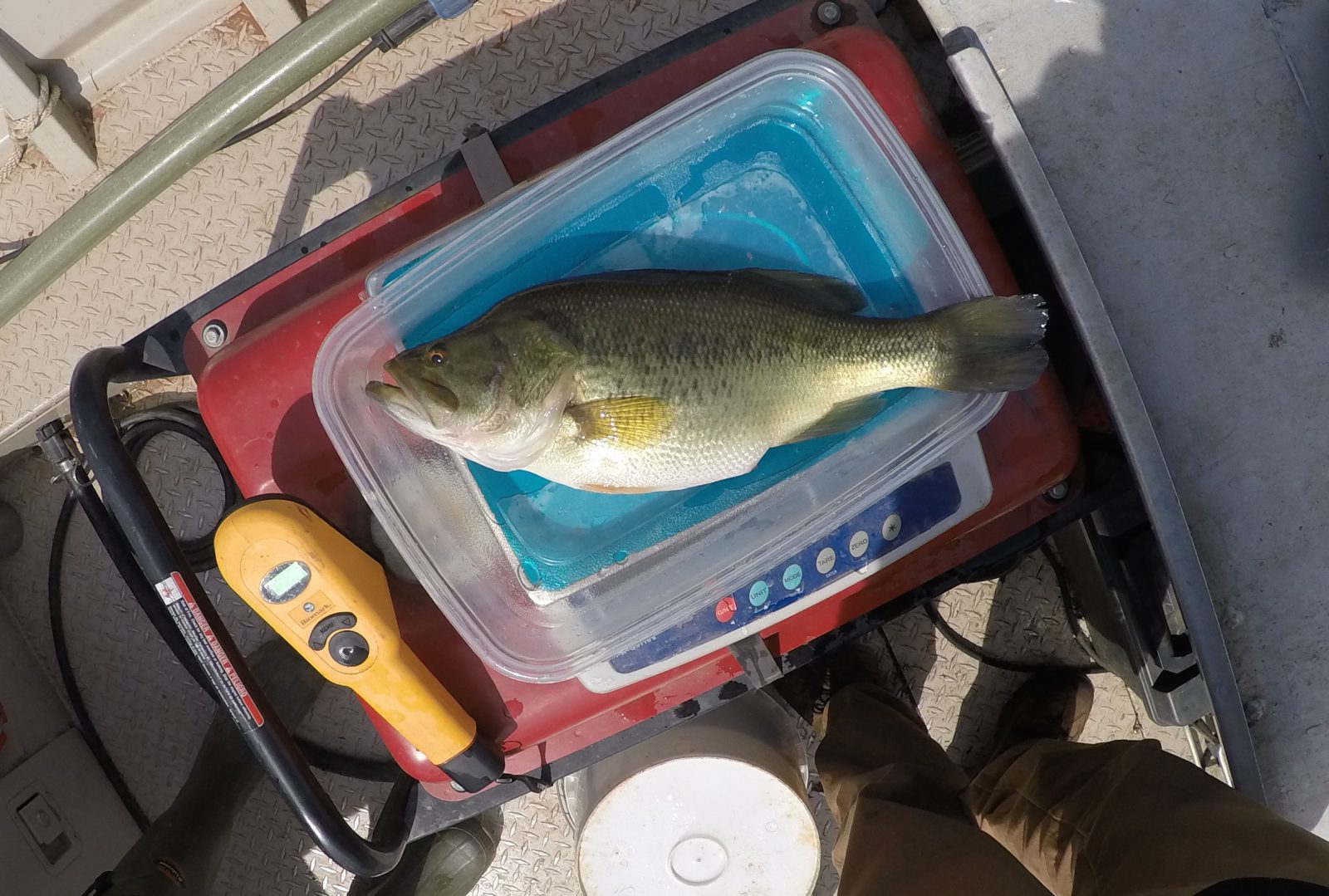
Revamping A 10-Acre Carolina Trophy Largemouth Bass Fishery
AS SEEN PUBLISHED IN POND BOSS MAGAZINE
Many biologists throughout the south would agree that double digit bass are the pinnacle of fisheries management. As a result, they are used to solidify the trophy status of the best Largemouth Bass fisheries across the country. In some instances, fisheries produce double digit bass from a single generation of fish, but fail to produce additional double-digit fish from a future year class. Producing just one bass greater than 10 pounds is a significant accomplishment and should create lifelong memories, but trophy fisheries are most exciting, as well as legitimate, when multiple generations of Largemouth Bass reach double digits over time.
This brings us to a property located in North Carolina where a private landowner’s passion for fishing led him on an 11 year journey to hopefully join the relatively small group who can say they have double-digit bass in their lake.
This History of A North Carolina Fishery
Back in the 60s, the property was a tobacco farm and the lake was built to irrigate the fields. As a result, the water was impounded as inexpensively as possible. This left the upper half of the lake full of stumps since there was no need to remove them. Fortunately, the lower half of the lake was cleaned up and deepened to find the necessary clay to create the dam. This type of construction left the lake with a unique habitat compared to most waterbodies.
Over the years, the tobacco farm shut down and the farm was sold in 1998. In 2010, around 50 years after the lake was built, the new owner decided to give the lake a fresh start. His goal was to create a fishery where kids and adults can both have high odds of fishing success, and maybe with a little luck land a few double-digit bass. The experience has been fun for him and he took a path of learning as he went, studying the subject matter and seeking advice from professionals when he felt the need.
Building Habitat for A Trophy Fishery
The first step in his journey was to drain the lake and repair the dam, which was overgrown with large trees. Additionally, the lake’s original galvanized drainpipe had rusted, and the previous owner had filled it with grout to solve the problem. Although this grout-filled pipe was no longer leaking, the new owner made the decision to remove the old pipe during the process. To make the repairs, he drained the lake. Once empty, the clay used to repair the dam was pulled from a deeper section of the lake, making a nice channel of deeper water. Then, after removing all of the trees from the dam, they dug up the rootballs and placed them along the top edge of the newly dug channel. This added some complexity to the deeper end of the lake, which was lacking quality habitat.
Creating A Fish Stocking Plan
While the water level was down, the owner then applied rotenone to the two shallow pools of water that remained. This was to eradicate any remaining fish, providing the lake with a fresh start and greatly increasing his odds of achieving the desired fishery.
In March of 2011, 8,500 Bluegill and 1,500 Redear Sunfish, as well as Fathead Minnows, Golden Shiners and Threadfin Shad were stocked. Then in July, 500 F1 Largemouth Bass fingerlings were stocked.
A couple of years later, after self-managing the lake, he was ready to better understand how the fish were doing. So, in the spring of 2013, the owner reached out to schedule an electrofishing study. After learning more about his journey, we were ready to provide some professional guidance.
Conducting An Electrofishing Survey
Within a month or two, the electrofishing boat was launched, and the owner spent a couple of hours having fun netting fish and helping weigh and measure them. Seeing the fishery from the bow of the electrofishing boat turned out to be an exciting, and informative process for him. Although the fishery had many good things in motion, it became clear that the biggest issue was that 36 Black Crappie were collected compared to 32 Largemouth Bass. Although 32 bass is a relatively low number, it made sense because they were scattered throughout the upper end, which is loaded with a significant amount of habitat.
Results of the Electrofishing Study
The owner was very surprised to see the Black Crappie in the lake, since he had taken precautions to ensure this issue would not occur. Although it is hard to say how many Black Crappie were present, it was likely that the number was the same or larger than the bass population. To make matters worse, the forage base was greatly depleted, in part because the lake had at least twice as many predator fish than it was originally designed to support. The Bluegill population was lacking both juvenile and adult fish, which led to the Largemouth Bass having poor Relative Weights (body condition) compared to what a recently reset waterbody should exhibit.
Overcoming these issues was going to take some work, but the problems were observed in time to correct them. Ideally, the lake would have been electrofished the year prior, but hindsight is 20/20, and a valuable lesson was learned.
Following the study, harvesting Black Crappie became a top priority. The fishery went from being rarely fished because the bass were young, to being fished aggressively. Although it was understood that the Black Crappie would likely always be present in the lake, the owner made it very difficult on them. Between annual fishing tournaments with friends, as well as a retired neighbor who enjoyed catching and eating Black Crappie, their population was suppressed. In one of the early years, over 1,400 were harvested.
In the spring of 2013, Bluegill were restocked to boost their depleted population. Another feeder was also added to the two that already existed. A more aggressive feeding program was implemented to boost Bluegill growth, and gravel was added to several locations to improve bluegill spawning success.
Additionally, the owner started an annual tradition of gathering unsold Christmas trees and adding them to the same five locations each year. The brush piles are located in five feet of water, out from gravel beds which are located in three feet of water. These bush piles have worked incredibly well, serving as predictable staging areas for pre-spawn female bass.
A Thriving Fishery Starts to Develop
The lake’s water has a dark tannic color. Although at times of the year the water can look unproductive, the lake is able to hold a nice plankton bloom throughout the growing season.
As the fishery has developed, one of the most noteworthy accomplishments, as well as a primary source of motivation for the owner’s hard work, has been the lake’s consistent ability to provide fishing opportunities for kids. Bluegill ranging from large to trophy status can be caught nearly every time someone goes fishing. This consistency has led to many memorable moments for both inexperienced and avid anglers. The lake record Bluegill was caught off the dock by a kid, tipping the scales over three pounds!
The Results: Massive Largemouth Bass
Fast forward to the year 2021. The original generation of Largemouth Bass have turned ten years old. Over the decade, the bass have continued to grow, slowly adding the length and weight needed to one day meet the client’s goal of double-digit bass. 2021 is likely the year it will happen based on the already impressive start. January produced the owner’s two best fish, which tipped the scales at 9lb 8oz and 9lb 5oz. In that same month, he also experienced his best day of fishing ever. In one hour of fishing, he caught six bass greater than six pounds, with the two most notable weighing 9lb 5oz and 8lb 3oz.
Achieving A Thriving Trophy Fishery
At the time of writing this (spring of 2021), his bass are still pre-spawn, so the probability of landing an egged-up female this year that finally tips the scales over 10 pounds is decent. If not in the spring, then this upcoming fall will provide another good opportunity.
The owner’s journey up to this point has been filled with many fun times, as well as hard work. If it were not for the unwelcome Black Crappie, it is highly probable that this fishery would have already produced bass over 10 pounds. Fortunately, the owner’s dedication to hitting his goals and understanding that he needed accurate data in his decision making process, ensured the problem was identified and corrected in time. Although any length of time for a trophy bass fishery to be off track is too long, it appears that these 10-year-old bass have the propensity needed to finally produce the lake’s first (of hopefully many) double-digit bass.
SOLitude Lake Management is a nationwide environmental firm committed to providing sustainable solutions that improve water quality, enhance beauty and preserve natural resources.
SOLitude’s team of aquatic scientists specializes in the development and execution of customized lake, stormwater pond, wetland and fisheries management programs. Services include water quality testing and restoration, algae and aquatic weed control, installation and maintenance of fountains and aeration systems, shoreline erosion control, muck and sediment removal and invasive species management. SOLitude partners with homeowners associations, golf courses, private landowners, businesses and municipalities. SOLitude Lake Management is part of Rentokil, a leading business services company, operating across the United States, Canada and Puerto Rico.
For more information, visit SOLitude Lake Management at solitudelakemanagement.com, and connect on Facebook, LinkedIn and Twitter.








